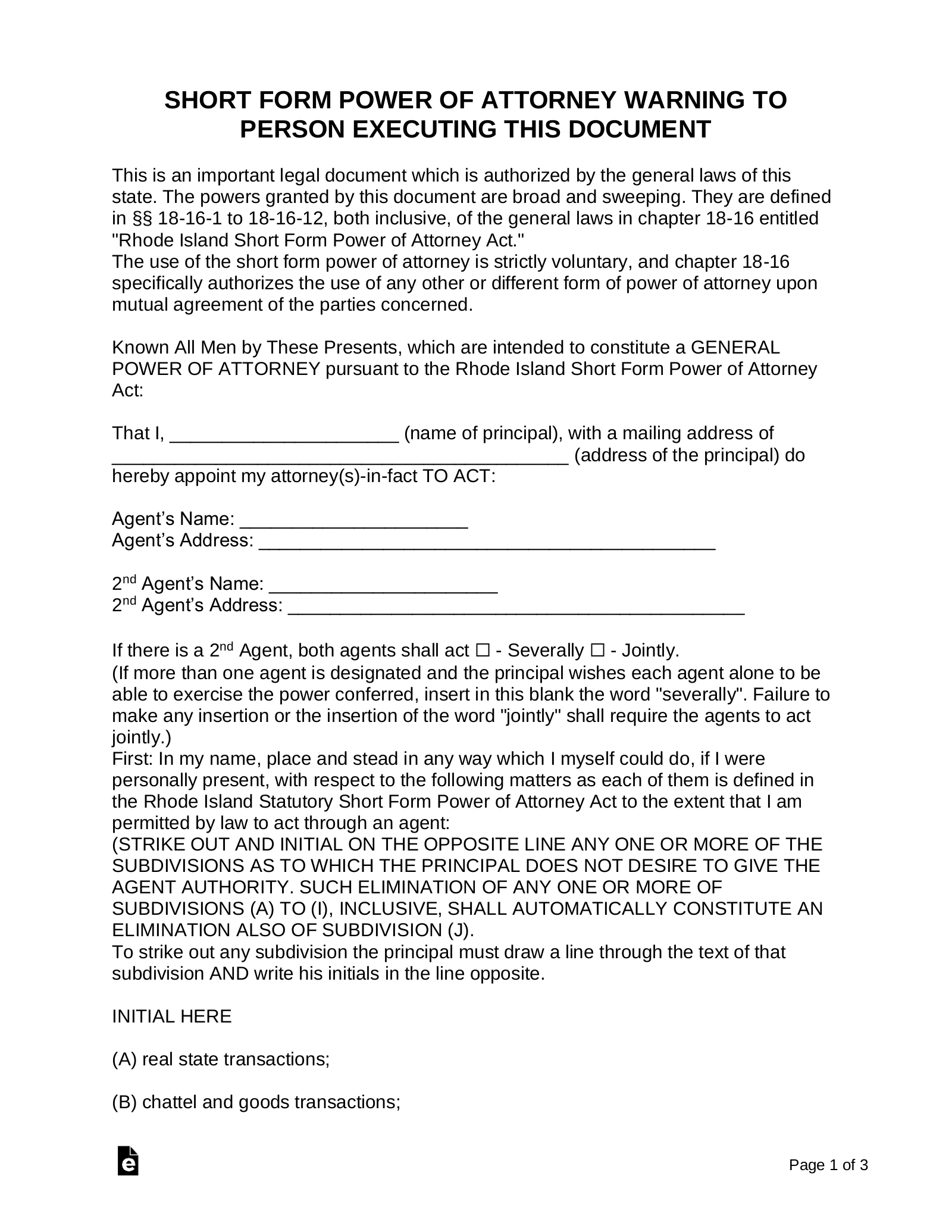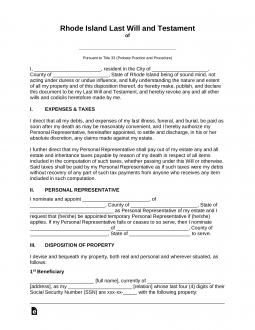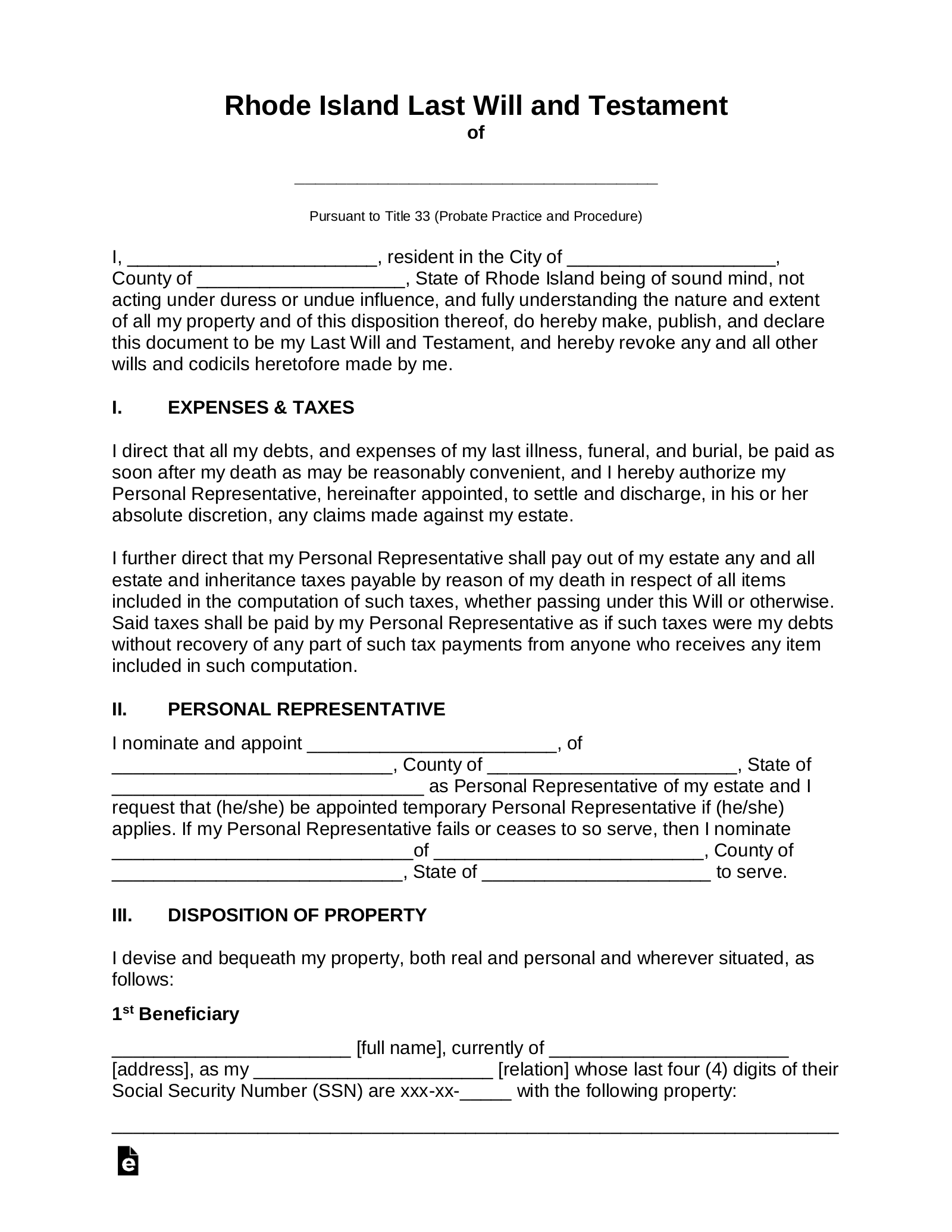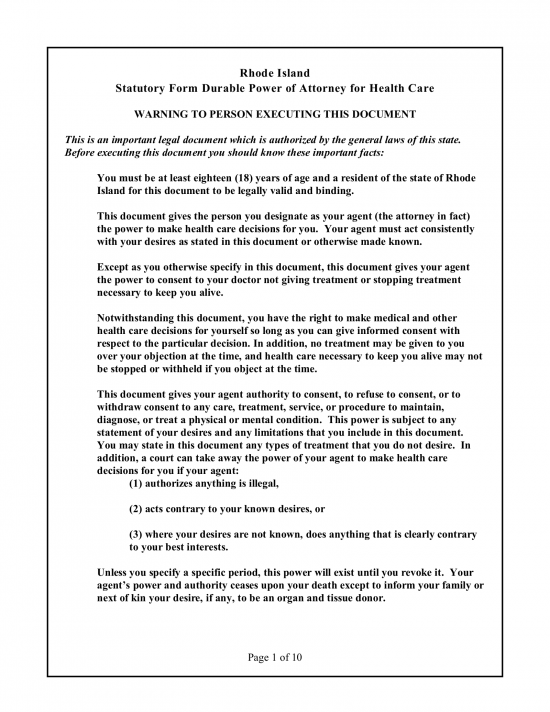Updated November 14, 2023
A Rhode Island last will and testament is a legal document set forth by a testator (the individual creating the will) that ensures that their personal and real property, fiduciary assets and/or any cash-on-hand, and digital property are distributed according to their wishes upon their death. On their will, a testator can outline instructions on how to distribute their estate among their designated beneficiaries.
Signing Requirements
Must be acknowledged by the testator in the presence of two or more witnesses at the same time, and the witnesses must sign the will in the presence of the testator.[1]
State Definition
“Will” shall extend to a testament and to a codicil and to an appointment by will, or by writing in the nature of a will, in exercise of a power.[2]
Related Forms
Download: PDF
 Durable (Financial) Power of Attorney
Durable (Financial) Power of Attorney
Download: PDF, MS Word, OpenDocument



